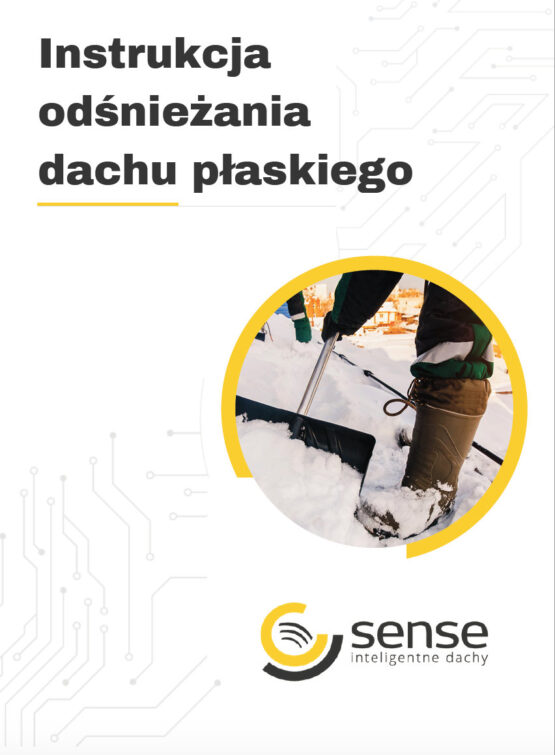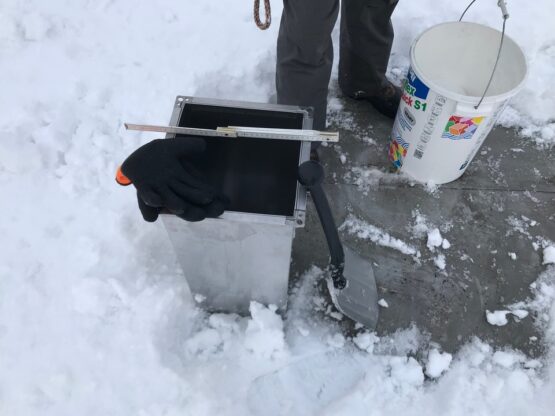Overzealousness pays
Some of you may already be shrugging your shoulders at the start of reading this and thinking: “There is no point in reading, this year we have already done the roof inspection.” The provisions of the Construction Law, more precisely article 62, impose on building owners the obligation to inspect the building at least once a year (twice a year for buildings with roof areas exceeding 2000 m2). It is also required to carry out such an inspection after the occurrence of weather phenomena that may weaken the structure of the building. However, in a situation where the safety of people and equipment is at stake, it is worth going overboard.
Autumn is a season characterized by increased variability of precipitation. On top of that, there is the risk of falling leaves, which can easily be blown onto the roof by the wind. Inspection of the roof during the leaf fall period is therefore crucial in terms of the patency of the roof drains. Ongoing inspection of roof drains will prevent clogging (e.g., by leaves) and thus the risk of large amounts of water accumulating on the roof or persistent stagnation of water.
Ready for winter
Roof servicing in the autumn also has the advantage of allowing us to prepare for winter. There are two risks associated with this time of year. The first is obvious: snow. The white fluff on the roof is one of the most significant loads on the building structure. We recommend you to read our series of articles on how to measure snow cover. The second risky element are thaws. Progressive climate change makes the course of winter less and less predictable. The rapid melting of snow, when our roof drains are not working properly, may mean problems with water drainage.
Such a dangerous situation is to be prevented by a preventive inspection of the flat roof carried out in autumn.
The sooner, the better
In addition to the above-mentioned annual inspection, owners of large buildings are required by building regulations to carry out a thorough multi-branch inspection every five years. Such an inspection is primarily to check the “suitability for use of the building”. The detailed inspection ends with an equally detailed report containing priority amendments and improvements to be introduced by facility managers.
If we decide to perform such a major service in autumn, we will have enough time to implement the necessary improvements before the new season. It is not worth delaying with them. It is definitely better – because safer and more secure – to make it in time for the spring, when the violent weather makes itself known. Alternating heavy rainfall, unexpected storms, hail and frequent snowstorms are a serious challenge for any flat roof.
Autumn roof inspection and its components
Remember that the flat roof inspection may be carried out only by a qualified structural engineer (Article 62, paragraph 4). This is a person with building qualifications in the relevant specialization. Therefore, you cannot entrust this duty to, for example, a building administrator, because in the eyes of the law such an inspection will not be valid.
It is important to pay attention to the roof covering in autumn. We need to find out whether it still effectively protects the roof structure from external moisture, and whether it can withstand the repeated changes from minus to plus temperatures in winter.
It is also necessary to check whether there is any water left in the building structure. This involves checking the drainage system, as well as verifying the patency of the roof drains.
Useful tools for daily roof inspection
Building regulations clearly state that flat roofs must be regularly inspected. This is justified by the fact that such a careful examination of the roof structure provides the building manager with full knowledge of the safety level of the facility. Today, however, solutions are available that provide equally precise information. And they do it not once a year, but every day. That’s the Smart Roof Platform with weather module. By using the Platform, you get a set of continuously generated data on the condition of the roof structure. You are also informed in advance about weather conditions that may affect your roof. This gives you the time to take preventative action, eliminating the risk of a building disaster or roof failure.
Choosing the Smart Roof Platform as a tool for everyday management of large buildings is also positively perceived by insurers. They see the Platform as significantly reducing the risk of roof damage. Even if such an unfortunate event occurs, the user of the Smart Roof Platform is much more likely to be compensated than a building manager who doesn’t use the solution.
Photovoltaic audit vs autumn roof inspection
Our industry experience shows that owners of large buildings are increasingly opting to install solar panels as an alternative source of everyday energy. It’s a decision that can bring big savings – but it also requires serious preparation. First, you need to make sure that your roof can withstand the load of the photovoltaic panels and ballast.
Carrying out a photovoltaic audit in the autumn – offered by Sense Monitoring – will give us time to plan for this project, including by adapting the building’s structure to install the panels. It’s also a good time to include the installation of photovoltaics in the budget for the next step.
In conclusion, autumn is a very good time to carry out a technical inspection of your flat roof for several reasons. By deciding to do it now – combined with deciding to implement the Smart Roof Platform or carrying out a photovoltaic audit, we can give ourselves peace of mind for the whole of next year. If you are convinced by our arguments, please contact us to discuss the details of carrying out such an audit for your building. We’re also happy to answer any questions you might have about the Smart Roof Platform or photovoltaics for flat roofs.








